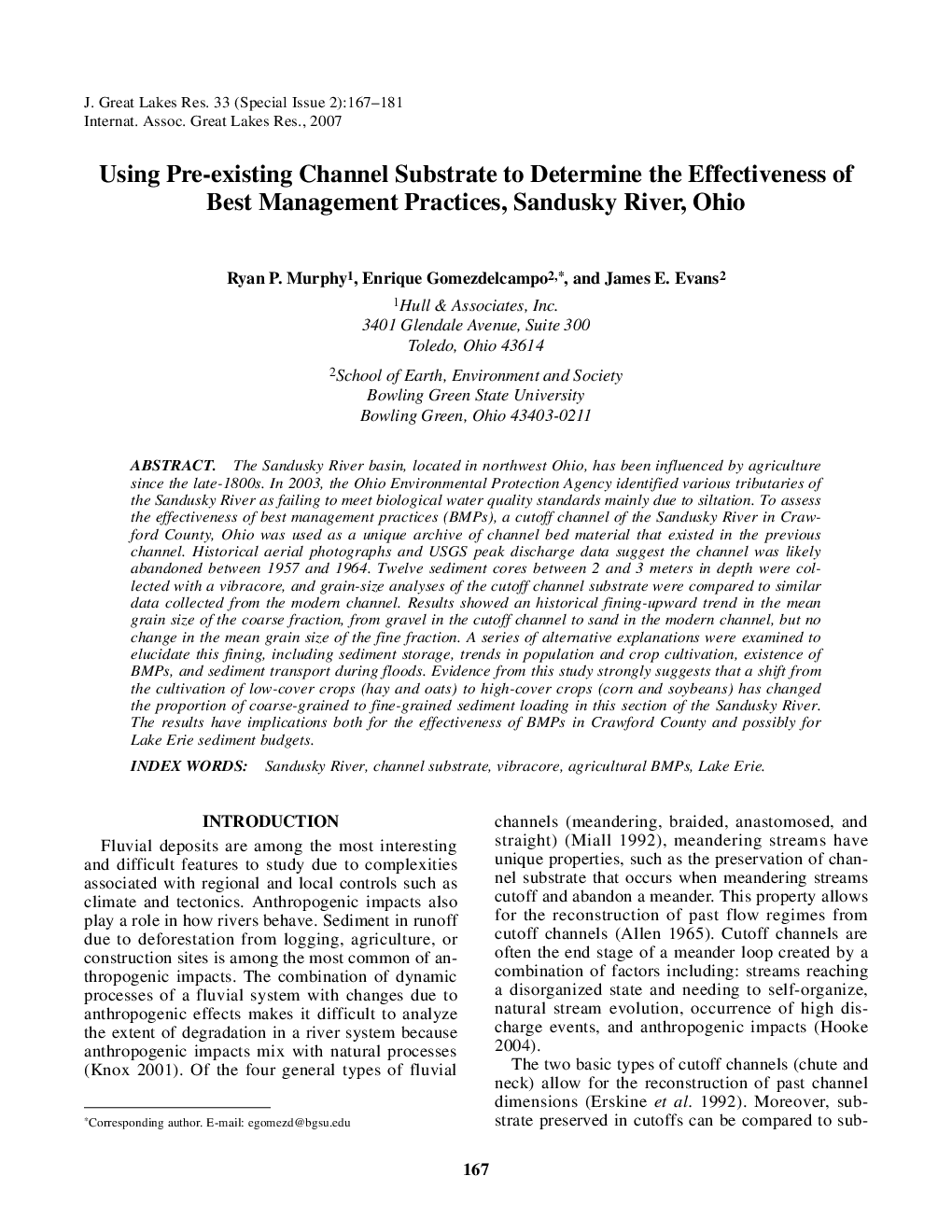| Article ID | Journal | Published Year | Pages | File Type |
|---|---|---|---|---|
| 4399485 | Journal of Great Lakes Research | 2007 | 15 Pages |
Abstract
The Sandusky River basin, located in northwest Ohio, has been influenced by agriculture since the late-1800s. In 2003, the Ohio Environmental Protection Agency identified various tributaries of the Sandusky River as failing to meet biological water quality standards mainly due to siltation. To assess the effectiveness of best management practices (BMPs), a cutoff channel of the Sandusky River in Crawford County, Ohio was used as a unique archive of channel bed material that existed in the previous channel. Historical aerial photographs and USGS peak discharge data suggest the channel was likely abandoned between 1957 and 1964. Twelve sediment cores between 2 and 3 meters in depth were collected with a vibracore, and grain-size analyses of the cutoff channel substrate were compared to similar data collected from the modern channel. Results showed an historical fining-upward trend in the mean grain size of the coarse fraction, from gravel in the cutoff channel to sand in the modern channel, but no change in the mean grain size of the fine fraction. A series of alternative explanations were examined to elucidate this fining, including sediment storage, trends in population and crop cultivation, existence of BMPs, and sediment transport during floods. Evidence from this study strongly suggests that a shift from the cultivation of low-cover crops (hay and oats) to high-cover crops (corn and soybeans) has changed the proportion of coarse-grained to fine-grained sediment loading in this section of the Sandusky River. The results have implications both for the effectiveness of BMPs in Crawford County and possibly for Lake Erie sediment budgets.
Keywords
Related Topics
Physical Sciences and Engineering
Earth and Planetary Sciences
Earth and Planetary Sciences (General)
Authors
Ryan P. Murphy, Enrique Gomezdelcampo, James E. Evans,
